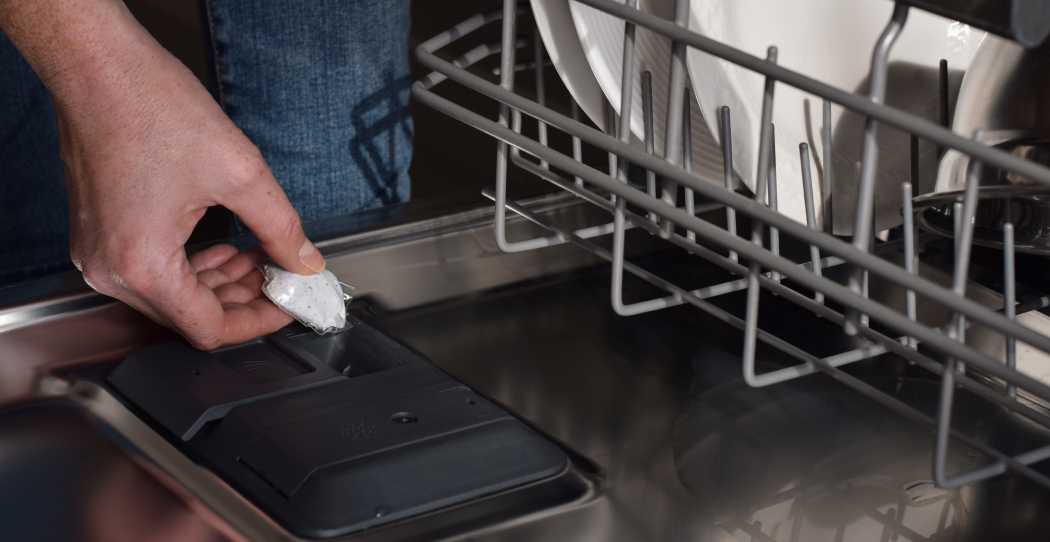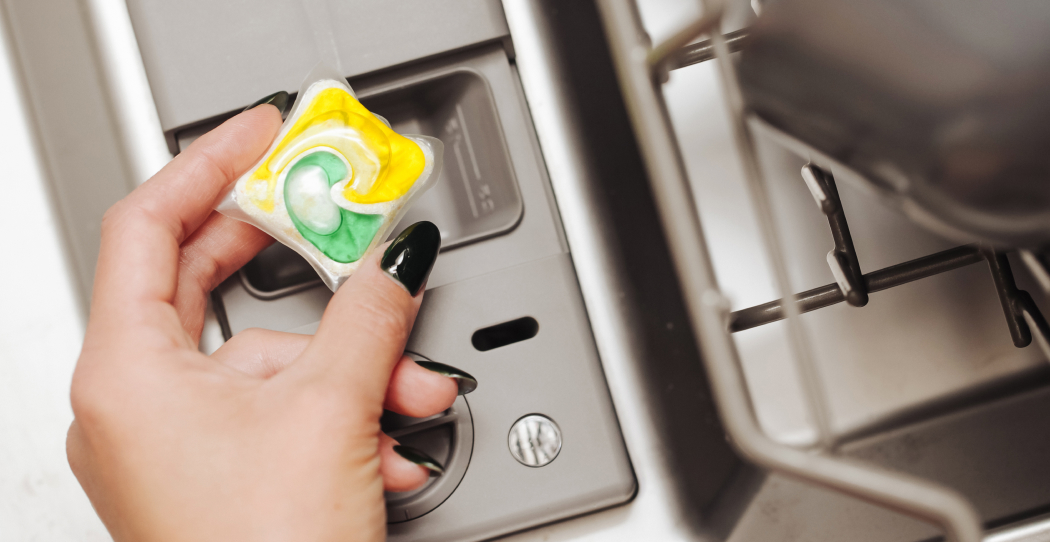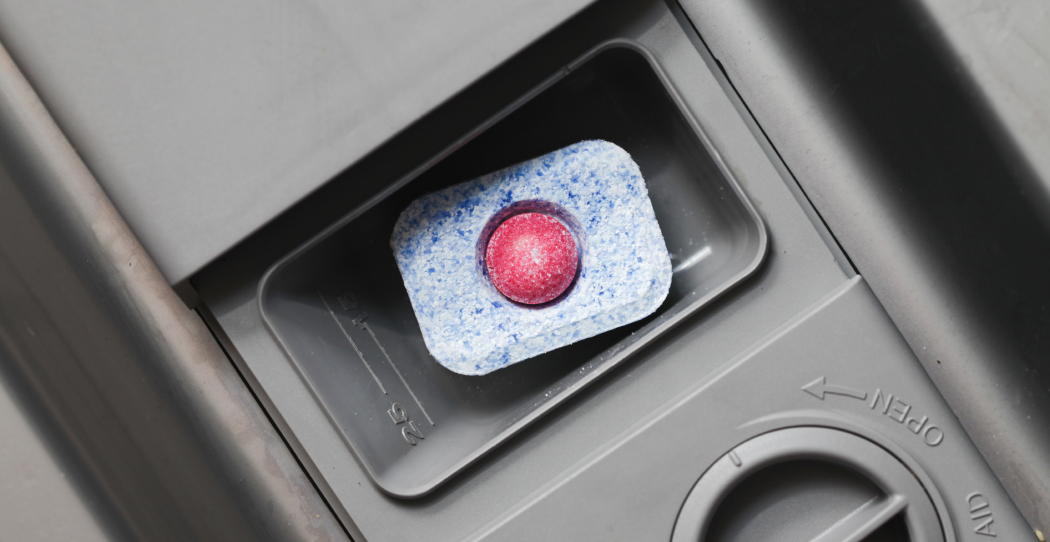Dishwashers are a staple in our kitchens. They combine the latest in plumbing, electronics, and engineering to make our lives easier. However, even the most reliable appliances can run into problems, and one common issue is with the soap dispenser.
A malfunctioning soap dispenser can lead to poorly cleaned dishes, which means you might end up doing more manual labor than you'd like. In this guide, we'll look into some of the most frequent reasons why even the best dishwashers may develop soap dispenser issues. We'll also give you some practical solutions and maintenance tips to help you keep your dishwasher in top shape.
Overview:
- How Do Dishwasher Soap Dispensers Work?
- Common Dishwasher Soap Dispenser Issues
- Dishwasher Preventative Maintenance Tips
- Find the Best Dishwashers and Appliances at Woodcocks
- FAQ: Frequently Asked Questions About Dishwasher Soap Dispenser Issues

How Do Dishwasher Soap Dispensers Work?
Before exploring common dishwasher soap dispenser issues, it's helpful to understand how a dishwasher soap dispenser operates.
The dispenser is designed to open at a specific point during the wash cycle, releasing detergent into the dishwasher. This timing is crucial for ensuring that the detergent mixes with water at the right moment for optimal cleaning. The dispenser typically has a latch, spring, gasket, and sometimes a wax motor, all working together to control detergent release.
Common Dishwasher Soap Dispenser Issues

1. Soap Buildup
One of the most common problems with dishwasher soap dispensers is soap buildup. Over time, detergent can accumulate inside the dispenser, preventing it from opening correctly. This buildup can be caused by using too much detergent or using a type of detergent that doesn't dissolve well.
How to fix: Regularly clean the dispenser with warm water and a soft brush. Additionally, ensure you're using the right amount and type of detergent recommended by the manufacturer.
2. Broken Latch
The latch is a crucial component that keeps the dispenser door closed until it's time to release the detergent. If the latch is broken or misaligned, the door may not shut, preventing the detergent from dispensing properly. A broken latch can often be identified if the dispenser door doesn't snap shut or pops open too easily.
How to fix: In such cases, the latch may need to be replaced. Fortunately, latch replacements are relatively inexpensive and easy to install.
3. Broken Spring
The spring in the dispenser door plays a vital role in the timing of detergent release. If the spring is broken or damaged, the door may not open correctly during the wash cycle, leaving detergent stuck in the dispenser. This issue can lead to dishes that aren't properly cleaned.
How to fix: If you notice that the dispenser door doesn't open at the right time, it's worth inspecting the spring and replacing it if necessary.
4. Warped Dispenser Door
While less common, a warped dispenser door can also cause issues. Warping typically occurs due to high temperatures during the wash cycle, which can affect the door's shape and prevent it from closing properly.
How to fix: If you suspect the door is warped, check for any visible signs of deformation. In most cases, replacing the door will solve the problem.
5. Worn Out Dispenser Gasket
The gasket inside the soap dispenser door is essential for keeping detergent sealed in until it's needed. Over time, gaskets can wear out, become brittle, or even crack, leading to leaks and improper sealing. If your dishwasher isn't cleaning dishes effectively, a worn-out gasket could be the culprit.
How to fix: Replacing the gasket is your best bet—this ensures that the correct amount of detergent is dispensed during each cycle.
6. Wax Motor Malfunction
The wax motor in your dishwasher controls the timing mechanism for the soap dispenser. If the wax motor malfunctions, the dispenser may not open at the right time, resulting in dishes that are only rinsed and not properly cleaned. A faulty wax motor can often be diagnosed by observing the timing of the dispenser door opening.
How to fix: If the timing seems off, replacing the wax motor can restore normal operation.
7. Loose Rinse Aid Cap
Another simple but often overlooked issue is a loose rinse aid cap. If the rinse aid cap isn't screwed on tightly, the dishwasher may not start its cycle, as it senses that a compartment isn't fully closed. This can prevent the detergent from being appropriately dispensed.
How to fix: Tightening the rinse aid cap can sometimes resolve the problem. If tightening doesn’t fix the issue, consider replacing the cap.
Dishwasher Preventative Maintenance Tips

Regular maintenance can go a long way in preventing issues with your dishwasher's soap dispenser. Here are a few tips:
- Clean the dispenser regularly: Remove any detergent residue and buildup.
- Use the right detergent: Follow the manufacturer's detergent type and amount recommendations.
- Check for wear and tear: Periodically inspect the latch, spring, and gasket for signs of damage.
- Run hot water before starting the dishwasher: This helps make sure the dishwasher fills with hot water, improving the detergent's effectiveness.
Find the Best Dishwashers and Appliances at Woodcocks
By getting familiar with these common dishwasher soap dispenser issues, you can keep your appliance running smoothly and extend its lifespan. Regular maintenance, choosing the right detergent, and tackling repairs promptly can make a huge difference in preventing everyday problems. Plus, it ensures that your dishes always come out sparkling clean, saving you time and hassle.
At Woodcocks, we have an excellent range of options from great brands like Bosch and KitchenAid. We also carry other trusted brands like Whirlpool, Samsung, and LG. Explore our selection of built-in dishwashers, drawer dishwashers, portable dishwashers, and dishwasher accessories!
What are you waiting for? Contact our appliance experts or visit us today at the best appliance store in Miami, Florida. Remember, if we don’t have it, you don’t need it!
Related readings from our blog:
FAQ: Frequently Asked Questions About Dishwasher Soap Dispenser Issues
What causes a dishwasher to not dispense soap?
Common causes include a broken latch, soap buildup, a faulty wax motor, or a malfunctioning dispenser door.
Why is my dishwasher leaving soap in the dispenser?
Soap can remain in the dispenser if there's a buildup, a broken spring, or the dishwasher isn't getting enough water pressure.
What causes dishwasher pods to not dissolve?
Pods may not dissolve if the water temperature is too low, the spray arms are blocked, or there's insufficient water flow.
Can I just throw a dishwasher pod in the dishwasher?
It's best to place the pod in the designated detergent compartment to ensure it dissolves properly and cleans effectively.
Why is my dishwasher leaving soapy film?
A soapy film can be caused by using too much detergent, hard water, or a malfunctioning rinse aid dispenser.
Why is my dishwasher running, but soap remains inside it?
If soap remains inside, it could be due to a clogged dispenser, insufficient water pressure, or a problem with the dispenser's release mechanism.
Can I fix a broken dishwasher soap dispenser myself?
Many issues, such as replacing a broken latch or gasket, can be fixed by the homeowner. However, if you're unsure or the problem persists, it's best to consult a professional technician.
What type of detergent should I use in my dishwasher?
Always use the detergent recommended by the dishwasher manufacturer. Using the wrong type or too much detergent can cause buildup and other issues.




